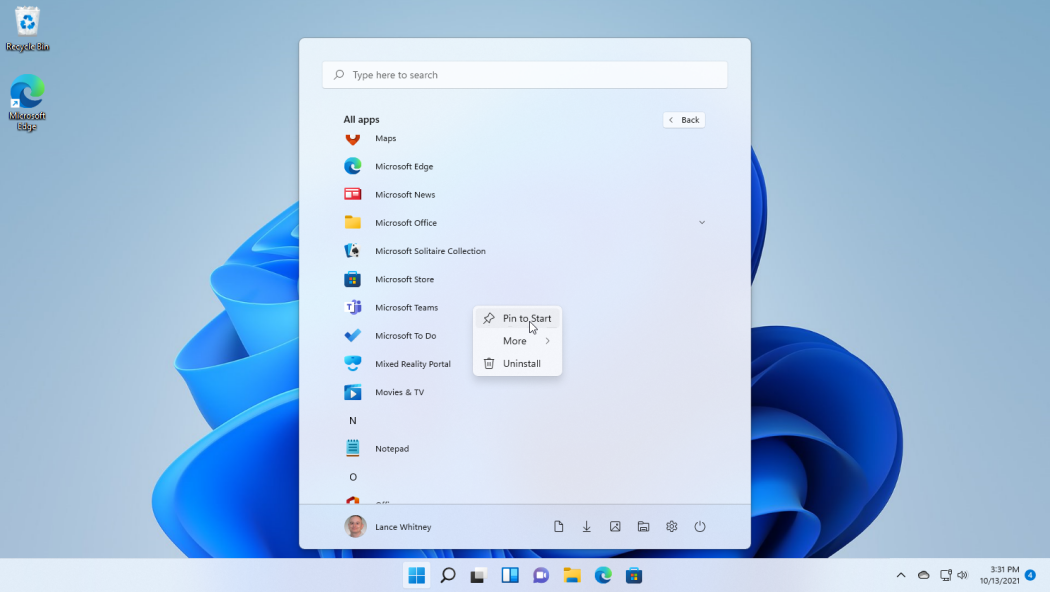How to See All Open Apps and Windows (for Windows 10, 11and Mac)
How to See All Open Apps and Windows (for Windows 10, 11and Mac)
This Ded9.com article will teach you how to quickly show all your open windows and Apps on your PC or Mac.
When working with multiple Apps on your computer, it’s easy to lose track of how many programs you have open. Fortunately, Windows 11, 10, and macOS all have keyboard shortcuts and useful tools that make multitasking easy.
Method 1: Open Windows 10 programs
1. Use Task View to display all windows on one page. The Task View icon is on your Taskbar by default and looks like three rectangular windows with a slider on the right side.
This will display all open windows on one screen and is the easiest way to see all open windows.
If you don’t see the Task View button on the Taskbar, right-click on the Taskbar and select Show Task View Button. You can also open the Task View by pressing the Windows key + Tab.
If you’ve created a virtual desktop on which you’re running different programs, click each virtual desktop in the top bar of Task View to see the open windows for that desktop.

2. Show windows slide by slide.
Another way to see all open programs on one screen is to align them using the options in the Taskbar. Right-click on it and then select one of these options to show all open windows:
- Select Cascade windows to display the open windows in a cascade, and the title bar of each window is visible.
- To display all open windows in one or more vertical stacks, select Show windows stacked. The number of stacks depends on the number of open windows.
- The Show windows side-by-side option is similar to the stacked feature but displays them horizontally instead of vertically.
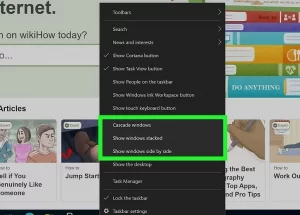
3. Try Alt+Tab ↹ to view and switch between apps. Release the Tab key while holding Alt to display all open windows.
This shortcut is great for quickly switching between open programs using keyboard keys instead of the mouse, but it’s also a quick way to see open windows.
To switch to another window, use the Tab key (while holding Alt) to navigate through open programs. When you reach the key you want to expose, release both keys.
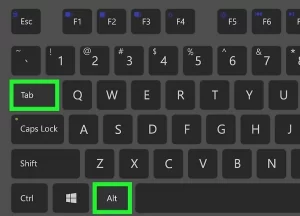
4. View all open programs and processes with Task Manager. Task Manager displays all programs and background processes running on your computer.
You can quickly open it by pressing Control + Shift + Esc simultaneously or right-clicking on the Taskbar and selecting Task Manager.
When Task Manager opens, you’ll see a brief list of open programs. Click More details to view more information, including a list of processes running in the background.
The programs in the “Apps” section of the Processes tab are those that have their windows open or minimized.

Method 2: Open Windows 11 programs
1. Use Task View to display all windows on one page.
The Task View icon looks like two overlapping squares—one white and one gray—and you’ll find it in the Taskbar at the bottom of the screen.
This method displays all windows on one screen and is the easiest way to see all open windows. You can also open the Task View by pressing the Windows key + Tab.
If you don’t see the Task View icon in the Taskbar, right-click it, select Taskbar settings, and then click the switch next to “Task View” to turn it on.
If you’re using a virtual desktop to run different sets of programs, you’ll see each desktop at the bottom of the Task View. Click on the desktop to see the windows opened on that desktop:

2. Hold your mouse over the taskbar icons for a quick look. When you open a program in Windows 11, its icon is visible in the Taskbar.
Programs that have open windows have white underlines on the Taskbar.
Hover over any icon with a white underline to see its open window(s) thumbnails.
Then you can click on one of the thumbnails to display that window.
Hover over the Task View icon to see all open desktops. You can then click on one of the open desktops to switch to that desktop.
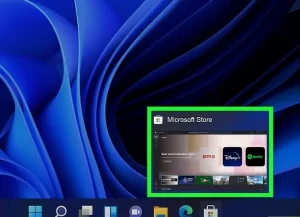
3. Try Alt+Tab ↹ to view and switch between apps. Release the Tab key while holding Alt to display all open windows.
This shortcut is great for quickly switching between open programs using keyboard keys instead of the mouse, but it’s also a great way to see open windows.
To switch to another window, use the Tab key (while holding Alt) to navigate through open programs. When you reach the key you want to expose, release both keys.

4. To switch to another window, use the Tab key (while holding Alt) to navigate through open programs. When you reach the key you want to expose, release both keys.
When Task Manager opens, you’ll see a brief list of open programs. Click More details to view more information, including a list of processes running in the background.
The programs in the “Apps” section of the Processes tab are those that have their windows open or minimized.
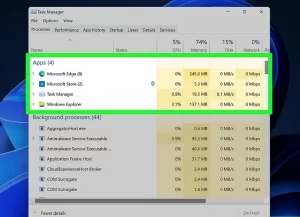
Method 3: Open Mac programs
1. Use Mission Control to see all open windows on one screen.
This is the easiest way to see which apps are open on your Mac.
If you’ve created Spaces to run different programs, you’ll see each Space at the top of Mission Control. Click on a space to see the windows that are open in that Space.
To open Mission Control, do one of the following:
- On an Apple keyboard, press the Mission Control key (F3) on the top row of keys. This key has an icon of a rectangle containing three smaller rectangles.
- If you’re using a MacBook, swipe up on the touchpad with three fingers.
- If your MacBook has a Touch Bar, tap the three rectangle icon.
- If you have a Magic Mouse, tap the surface with two fingers.
- Press Control + Up Arrow on the keyboard at the same time.
- Double-click the Mission Control app in your Applications folder.
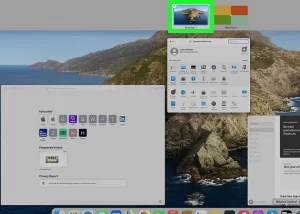
2. Try ⌘ Command+Tab ↹ to view and switch between apps.
This shortcut is great for quickly displaying all open programs. When you press this combination, release the Tab key and still hold the Command key to keep open programs visible.
To switch between open windows: While holding Command, use the left and right arrow keys to select the program you want to use, then release the Command key to bring it into view.

3. To view and close open programs, open the Force Quit menu.
Force Quit is there to help you quickly close apps, but you can also use it to see which windows are open on your Mac quickly. To open this menu, press Command + Option + Esc simultaneously.
You can close a program in this window by selecting and clicking Force Quit.
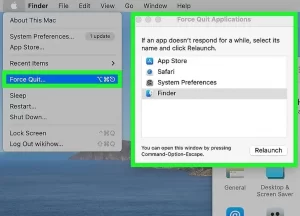
4. View all open programs and processes with Activity Monitor.
Activity Monitor not only shows you which apps are open but also tells you how much memory, energy, and CPU power each app is using.
To open Activity Monitor, go to your Applications folder in the Finder, double-click the utility folder, and then double-click Activity Monitor.
Activity Monitor also shows information about processes running in the background.
Click the tabs at the top of Activity Monitor to learn about the resources each open program or process consumes.
Conclusion
Finally, several other points are worth mentioning, which we have included in the list below:
Reduce the number of open windows for an application on your Mac: With each application window open, click the Window menu and choose Merge All Windows. To return a combo tab to its window, select the Tab, click the Window menu, and then choose Move Tab to New Window.
If you’re using a Mac app with multiple windows open and want to close them all simultaneously, press Command + Option + W.
This article looked at all open programs in Windows 10, 11, and Mac with different shortcuts and separate methods. Good luck!










